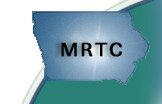

|
Compressed digital videoconferencing is the primary technology in use at the MRTC. The initial systems deployed were CLI 8775 and 8750 Radiance codecs in dual monitor, single monitor, and medical roll-about configurations. These systems are capable of full T1 (1.544 Mbps) transmission speeds, or fractions thereof. The bulk of the MRTC network consists of dedicated ISDN PRI circuits provided by the Iowa Communications Network (ICN). Historically, most point-to-point conferences and all clinical encounters were conducted at 1152 Kbps, or ¾ T1, while multipoint conferences are conducted at 384Kbps. Gradually, to cut costs and allow deployment of systems where ISDN PRI is either not available or not affordable, more and more conferences of all types are being conducted at 384 Kbps. This transition is allowing the deployment of more affordable systems, including the latest generation of ISDN BRI systems, into more locations thus making the technology more accessible to physicians and other providers as well as health care administrators and others. Convenience of access, ease of use and reliability are viewed as the keystones to success for the MRTC.
|

|
The MRTC recently deployed several state-of-the-art quad ISDN BRI systems from PictureTel (900 Series) to disseminate videoconferencing technology to the primary workplace of MRTC's endusers. The high quality audio and video at lower bandwidths, people and content features, data collaboration capabilities and reasonable cost convinced the MRTC staff that these platforms were the best choice for newest technology deployment phase. |
|
|
Dr. SMITH (Simple Mobile Integrated Telemedicine Hardware) is an example of a homegrown medical roll-about. Dr. SMITH has several features that make its design unique in the field of telemedicine. The most noticeable feature of Dr. SMITH is its articulating arm. This arm is used to support the main three chip camera and allows the camera to provide either a "head on" or an "over the shoulder" view. |
|
|
Designed with mobility in mind, Dr. SMITH can be rolled from the exam room to the emergency room to the conference room with little effort. By connecting two communication lines and one power source, Dr. SMITH can be quickly utilized for telemedicine encounters, emergency tele-consultations, continuing medical education and administrative meetings. Ascend (now Lucent) RPMs (remote port modules) allow the carts to be located distant to the IMUXs (inverse multiplexers)and patch panels in each facility allow the routing of network from the IMUX to the desired enduser location. Additional larger monitors are connected for administrative and educational meetings. |
|
|
Dr. SMITH became a reality with the help of Norstan Communications, who provided assistance with integration and installation; Compression Labs Inc., who provided specifications and interactive video equipment; Snap-On Tools in Algona, Iowa, who fabricated the carts; Creative Electric, who aided with electrical specification and installation; and Ames Laboratories, who assisted with design and fabrication of the articulating arm. |
|
|
This is a typical CLI Radiance 8775 dual
monitor system. These systems were deployed as large room systems and are utilized primary for administrative and educational conferences, but also serve satisfactorily as receive systems for clinical interactions. |
|
|
|
|
| This is a smaller, single monitor system. These were deployed primarily in nursing homes where clinical imaging and mobility demands were anticipated to be less challenging. | |
|
|
|
Home | What's New | Member Sites | Services | Technology | About MRTC |
Links | Members Only | Contact Us
Copyright © 2022 Midwest Rural Telemedicine Consortium
All rights reserved.
Last updated: January 2001